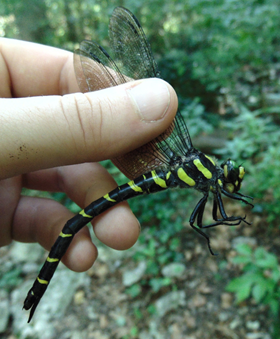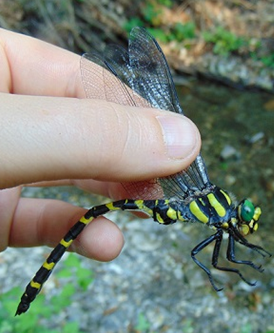About
Cordulegaster species under the pressure of climate change: What we know and what we expect?
Abstract
AimThe two dragonfly species Balkan Goldenring (Cordulegaster heros Theischinger, 1979) and the Two- Toothed Goldenring (Cordulegaster bidentata Sélys, 1843) are classified as “near threatened” according to the IUCN Red List (2021) and are strictly protected. By modelling the potential occurrence conditions of these species, with the help of Species Distribution Modelling (SDM) we get a more accurate picture of the most suitable areas for the species, thus facilitating the planning and implementation of monitoring projects.
Location
Europe
Methods
The use of occurrence models based on various biotic and abiotic background variables is an increasingly common method in conservation biology. As a first step a European-wide scale dataset with altogether 2167 occurrence data were collected for the two species which formed the basis of our models. For the modelling BIOMOD2 package in R environment were used. For the model evaluation ‘ROC’ with a 0.7 threshold were used. For the modelling of future predictions, 3 circular models were selected with GCM CompareR tool, and 2 different scenarios (RCP 4.5, and 8). For the present and future projections the consensus of the models were used which were selected by the ROC value.
Results
We revealed how and which climatic and abiotic background variables affect these species most and which areas are the most suitable for the species based on our study. We calculated how the future climatic changes affect the range of suitable areas of the two endangered dragonfly species.
Main conclusions
We suggest that these Cordulegaster species are strongly influenced by climatic variables that have a major impact on the occurrence of these species in the future. We found that the distribution of Cordulegaster bidentata shifts northwards. The forecasts for suitable areas of the C. heros showed an upward shift towards high elevations and the models predict a more than 90% loss of suitable areas.
Keywords: modelling, future distribution, shift pattern, Odonata
Citation: XXXXX
Bidentata
C. bidentata points
Map layers

Heros
C. heros points
Map layers

